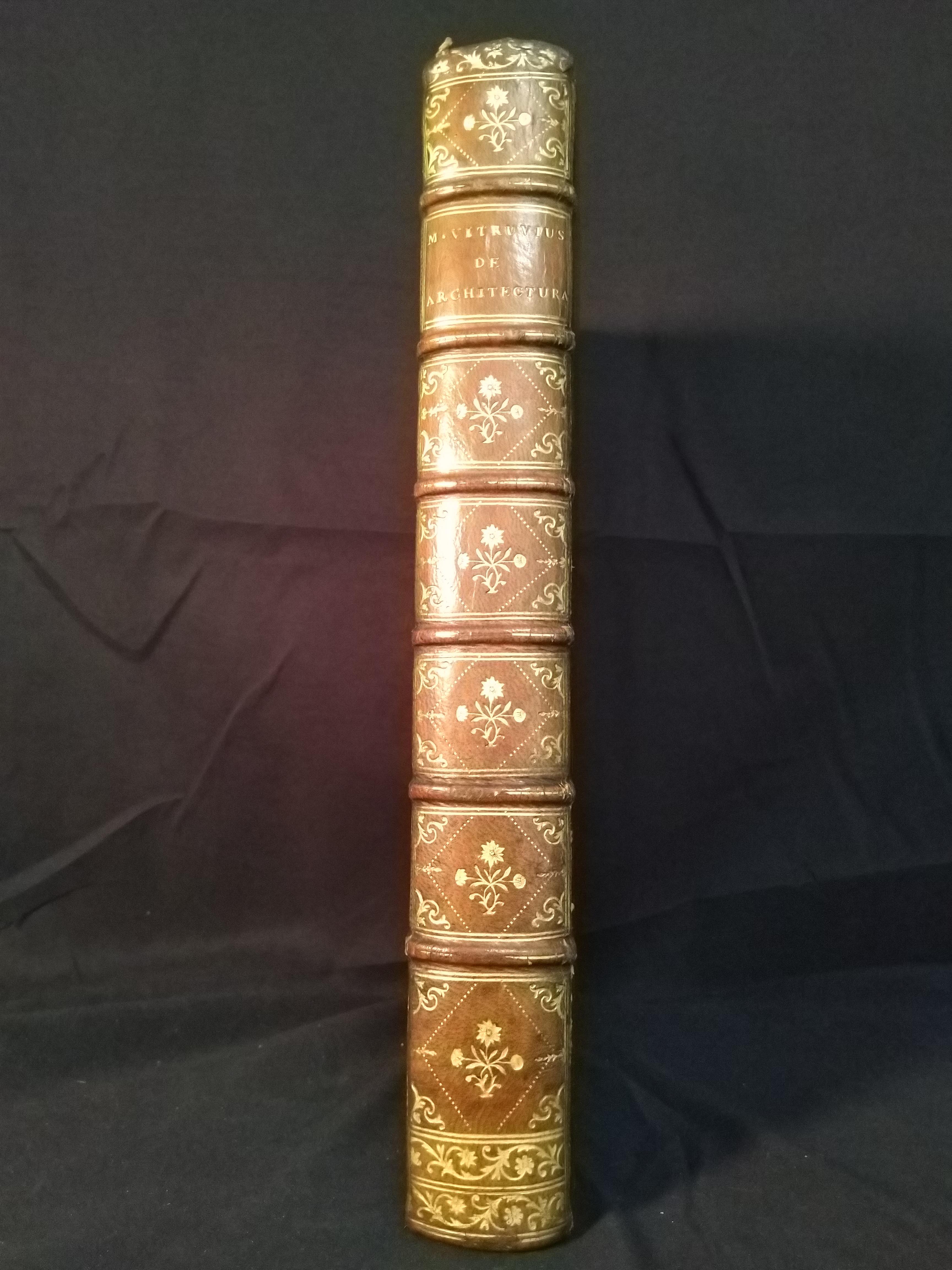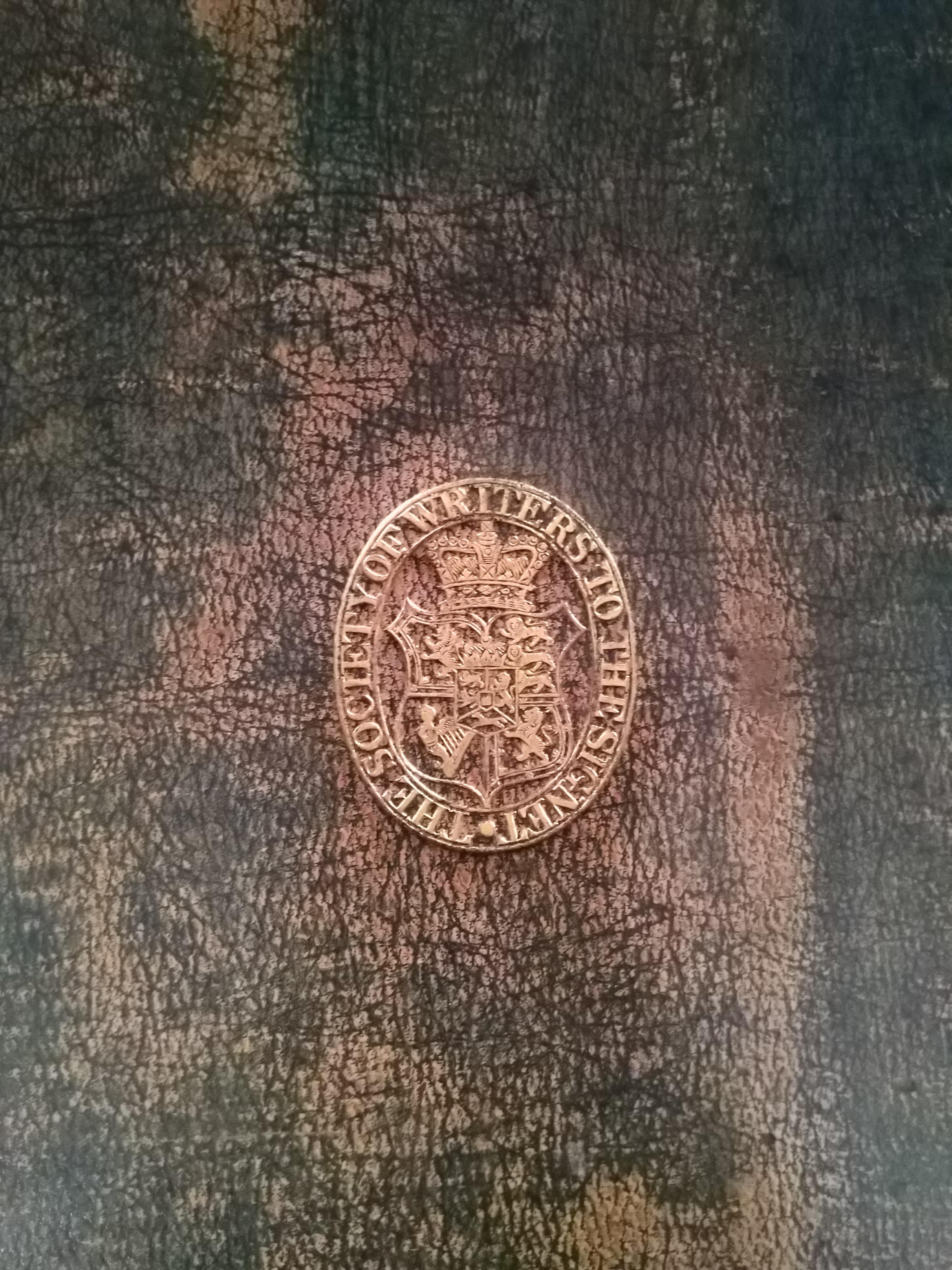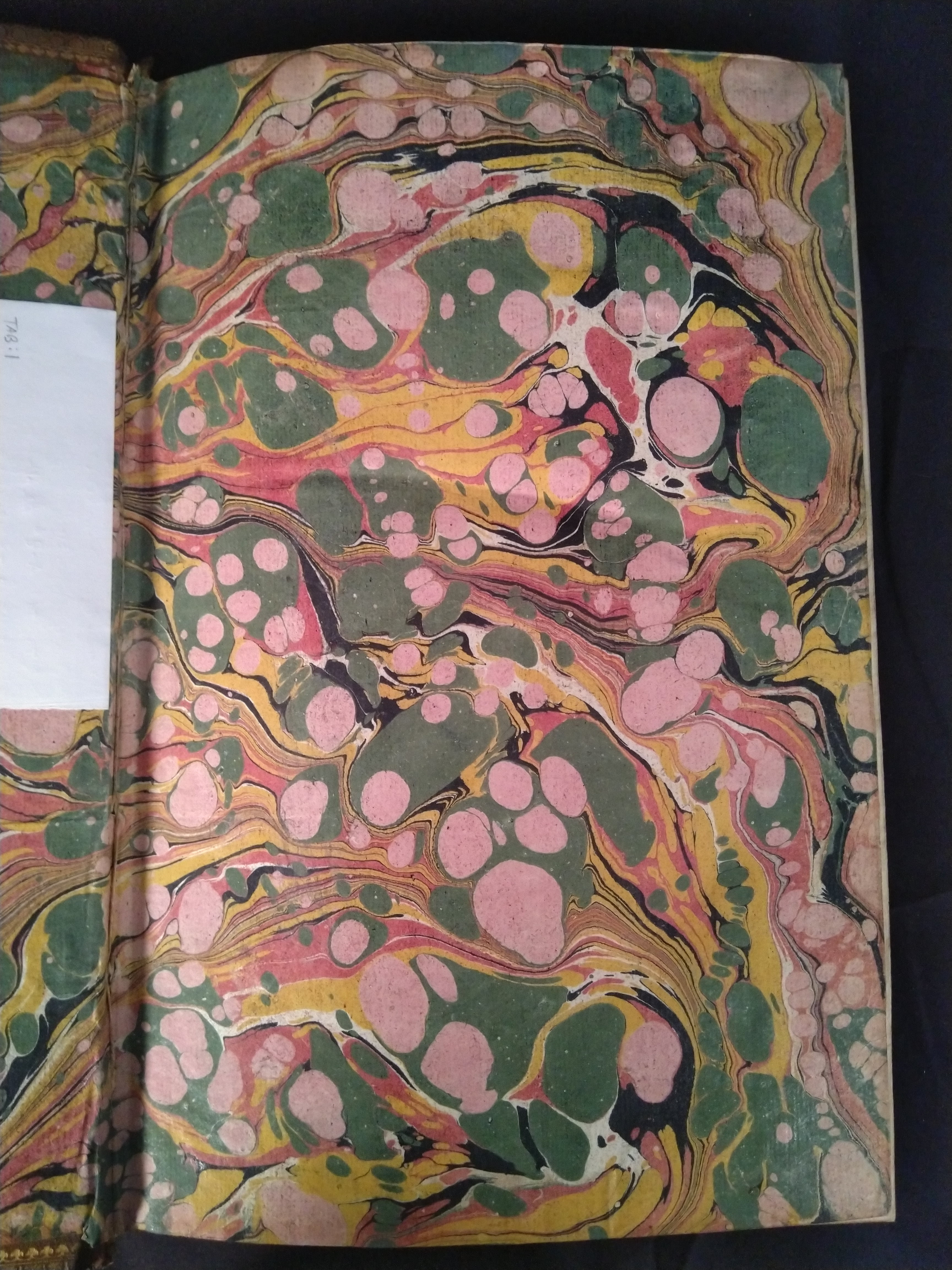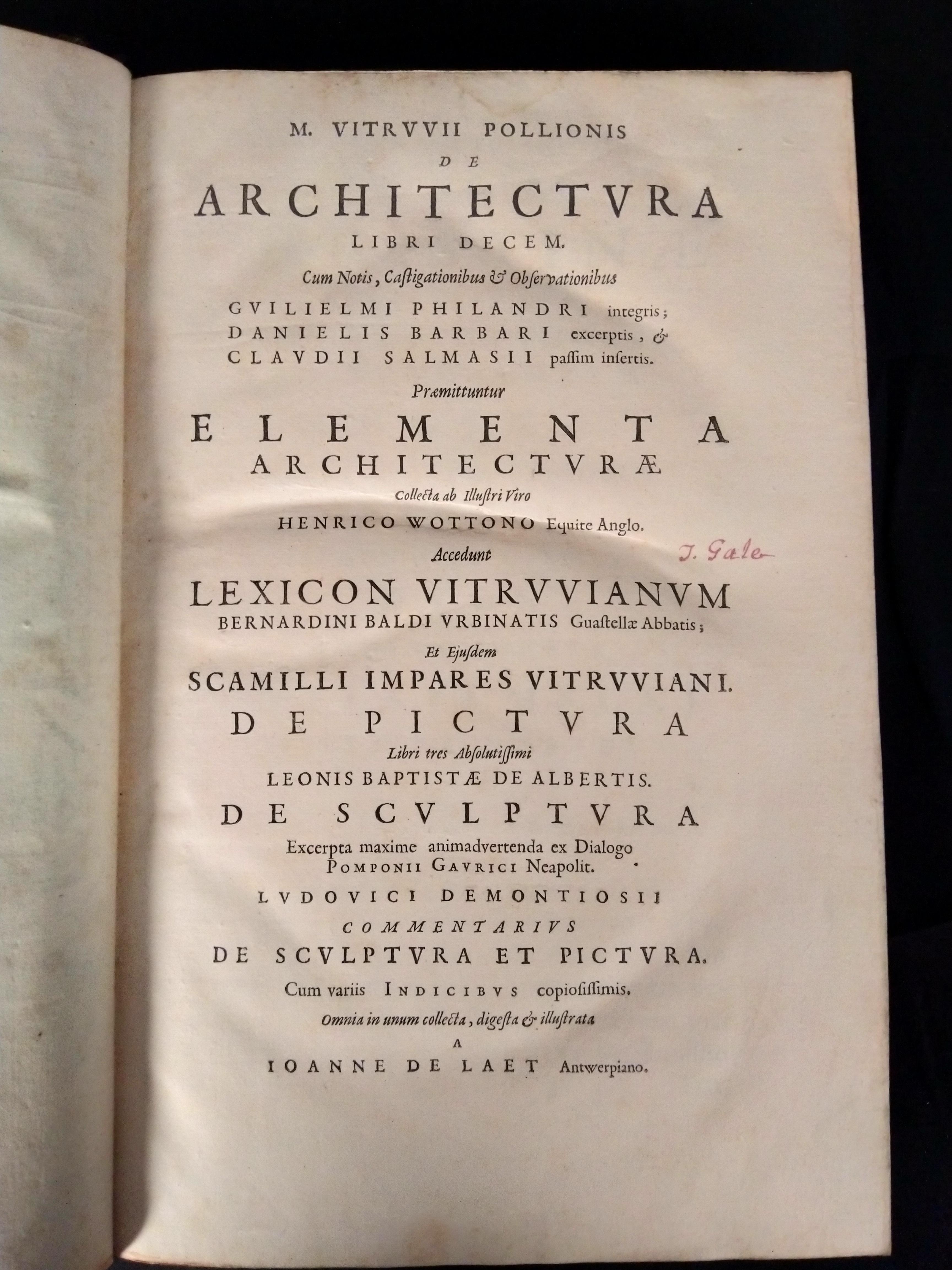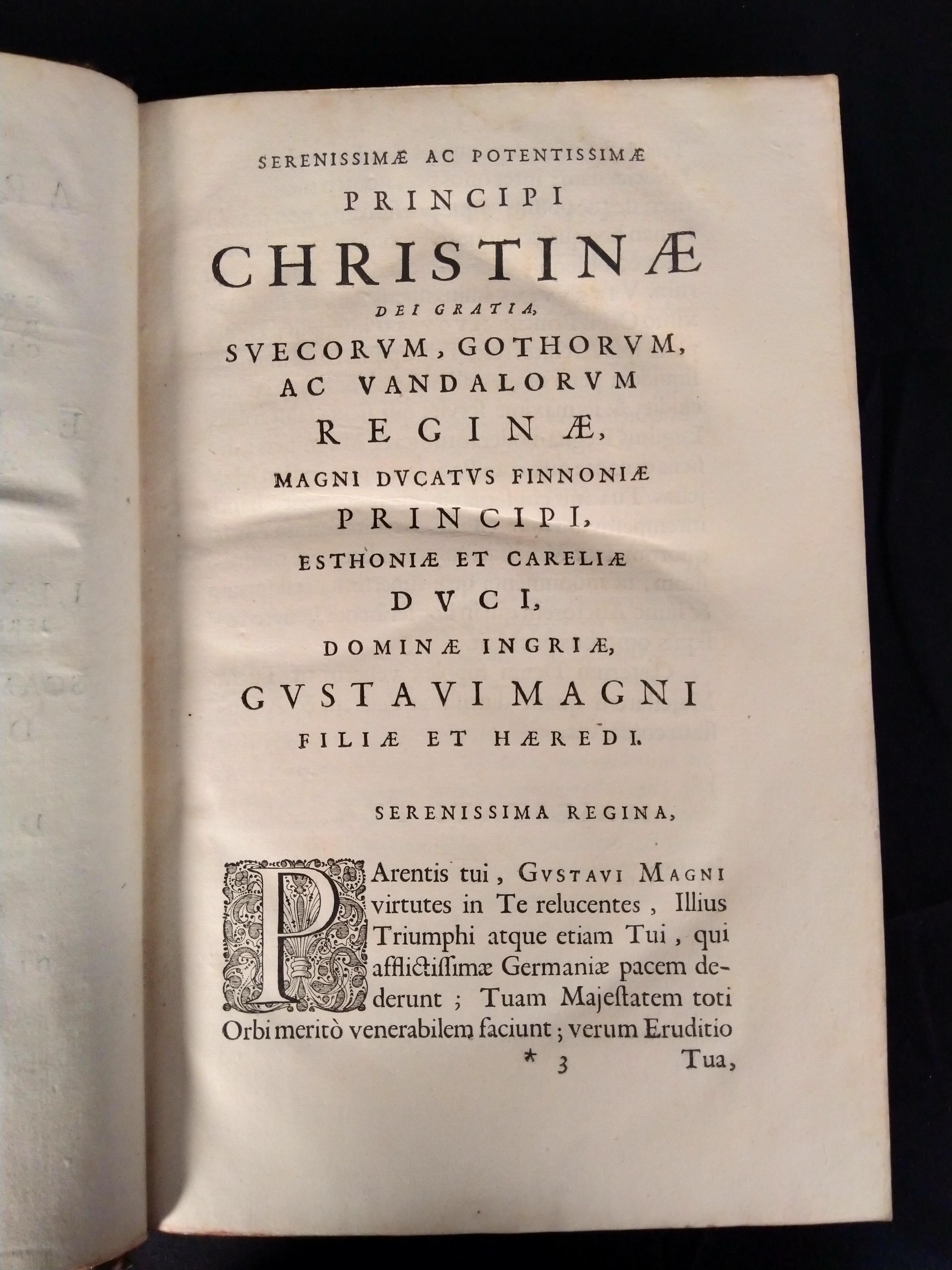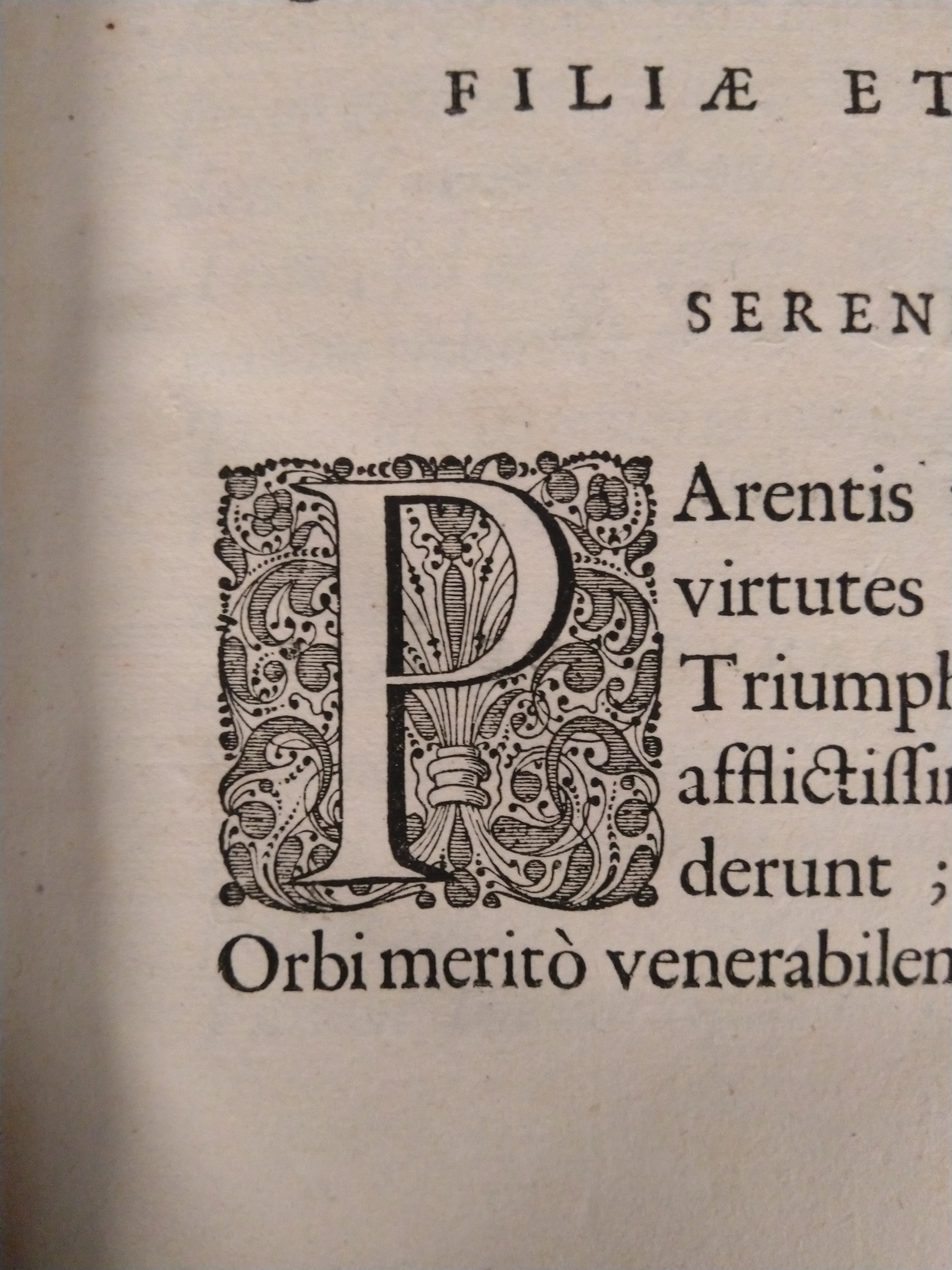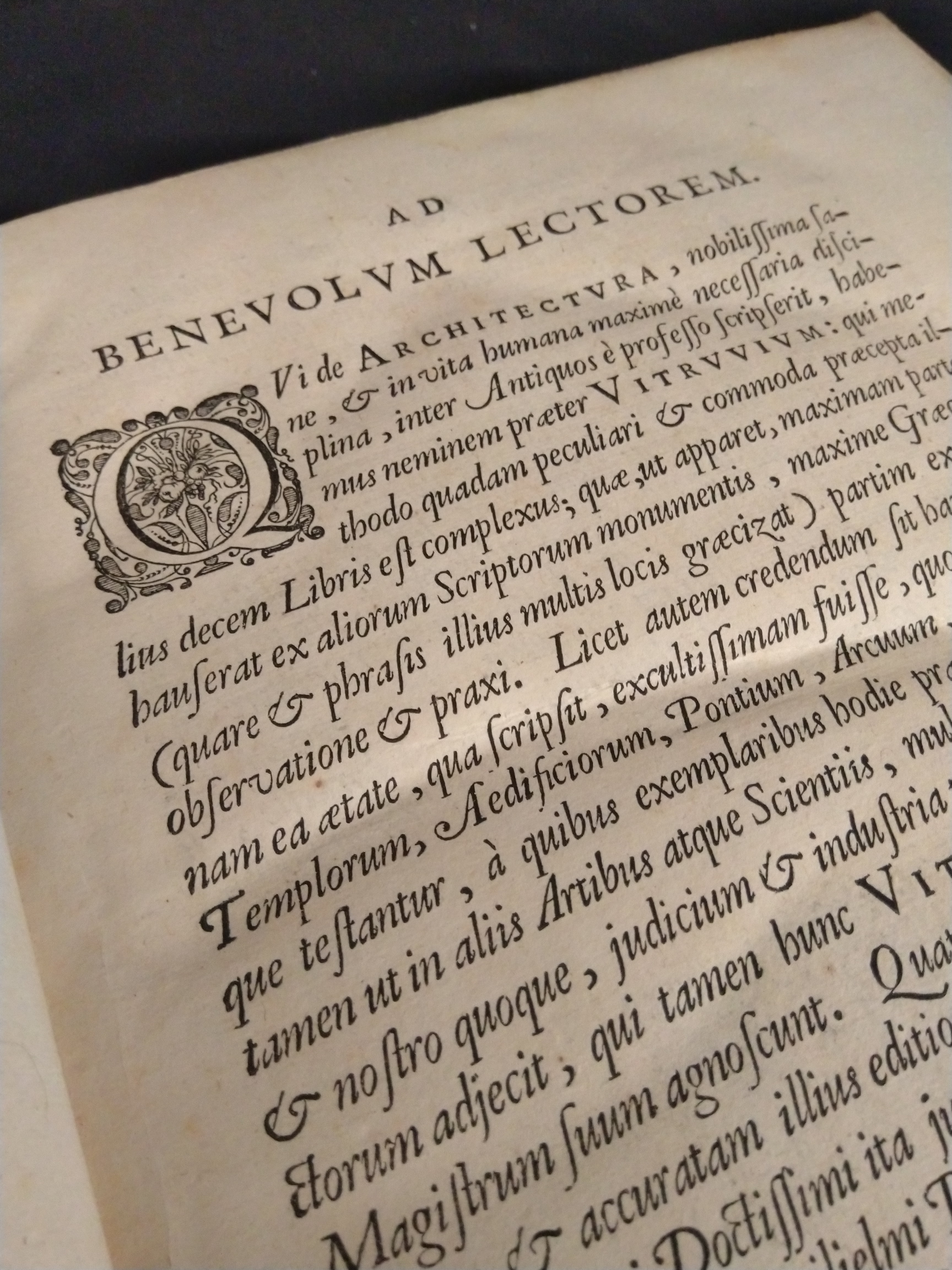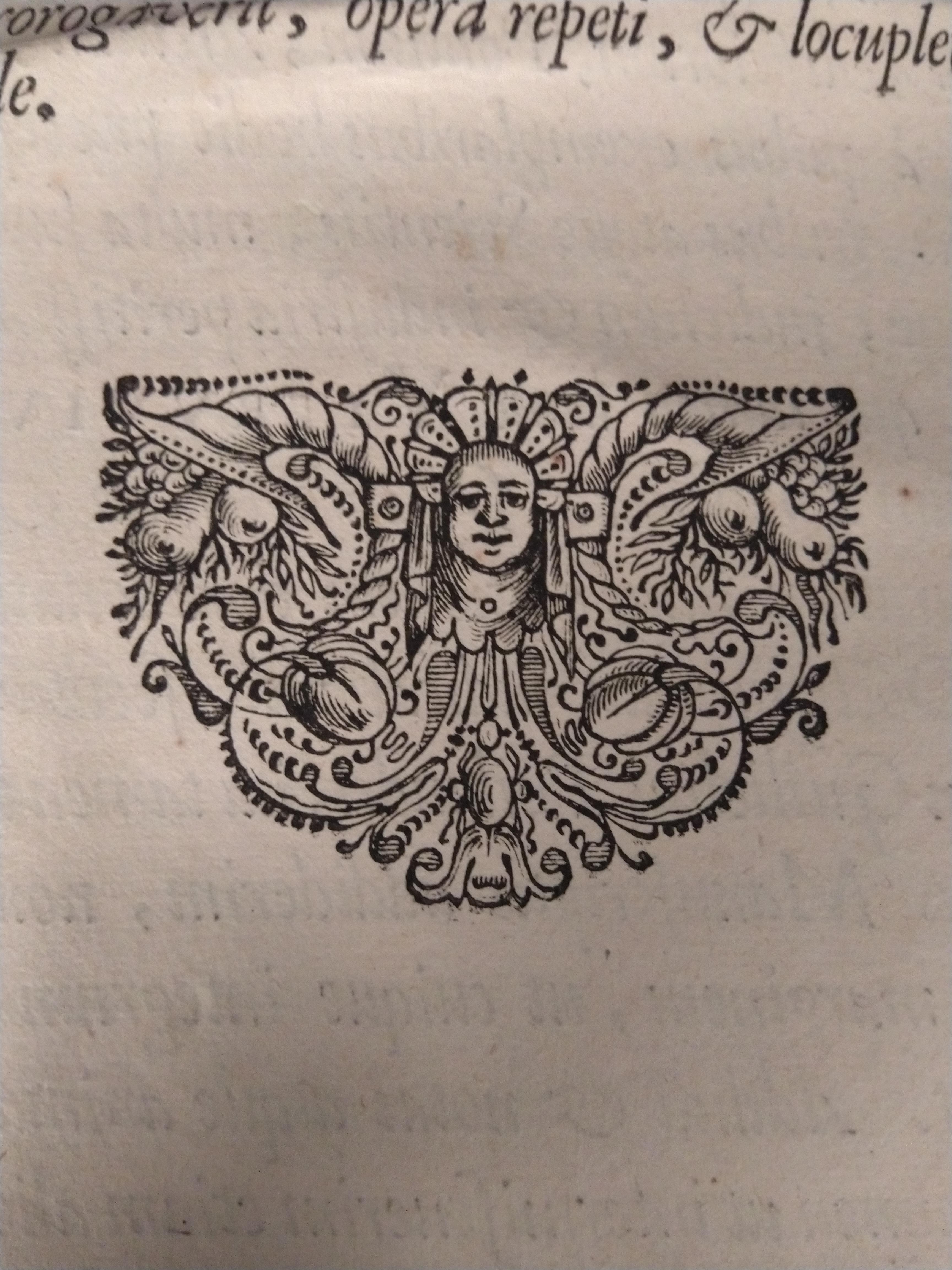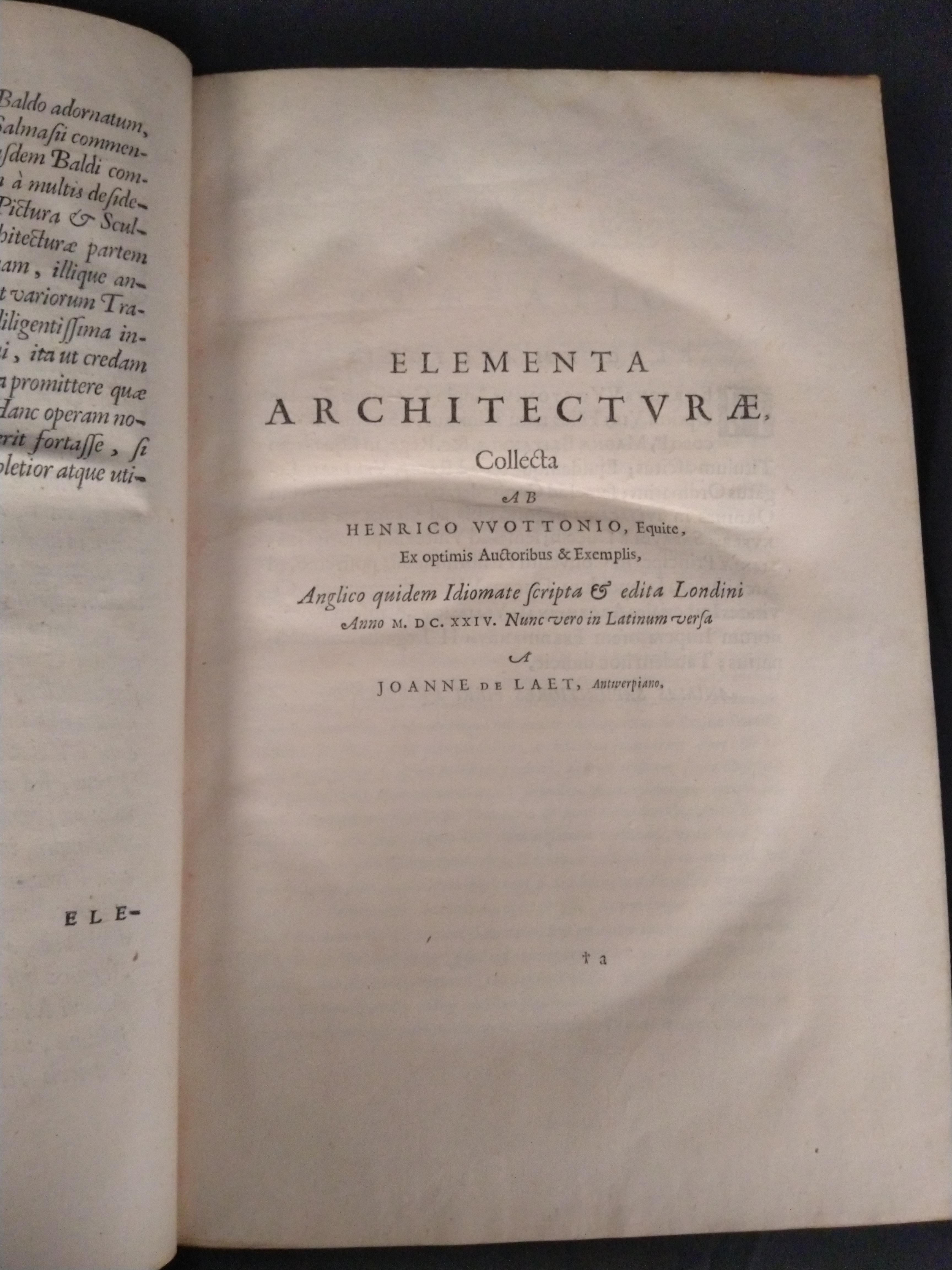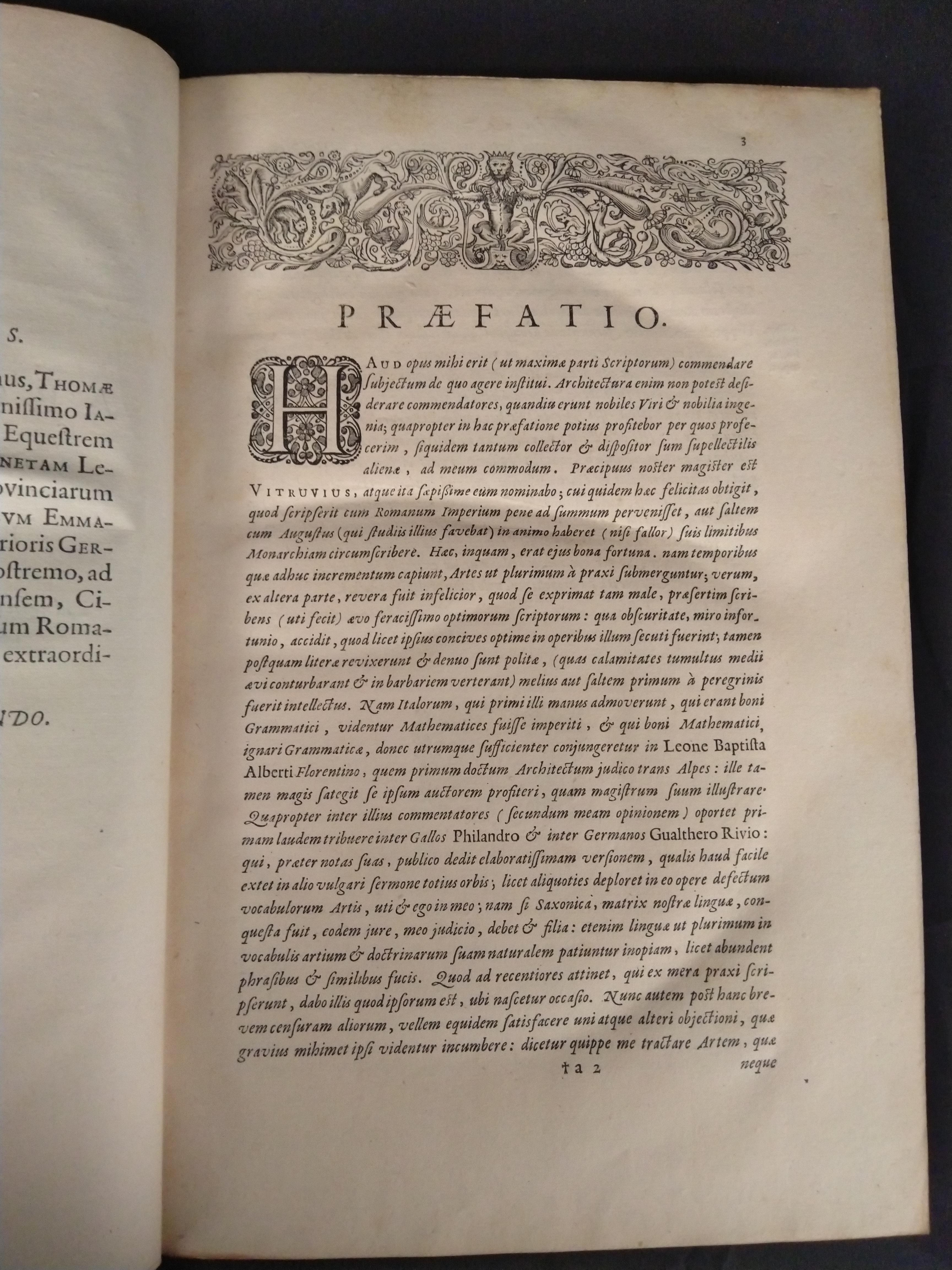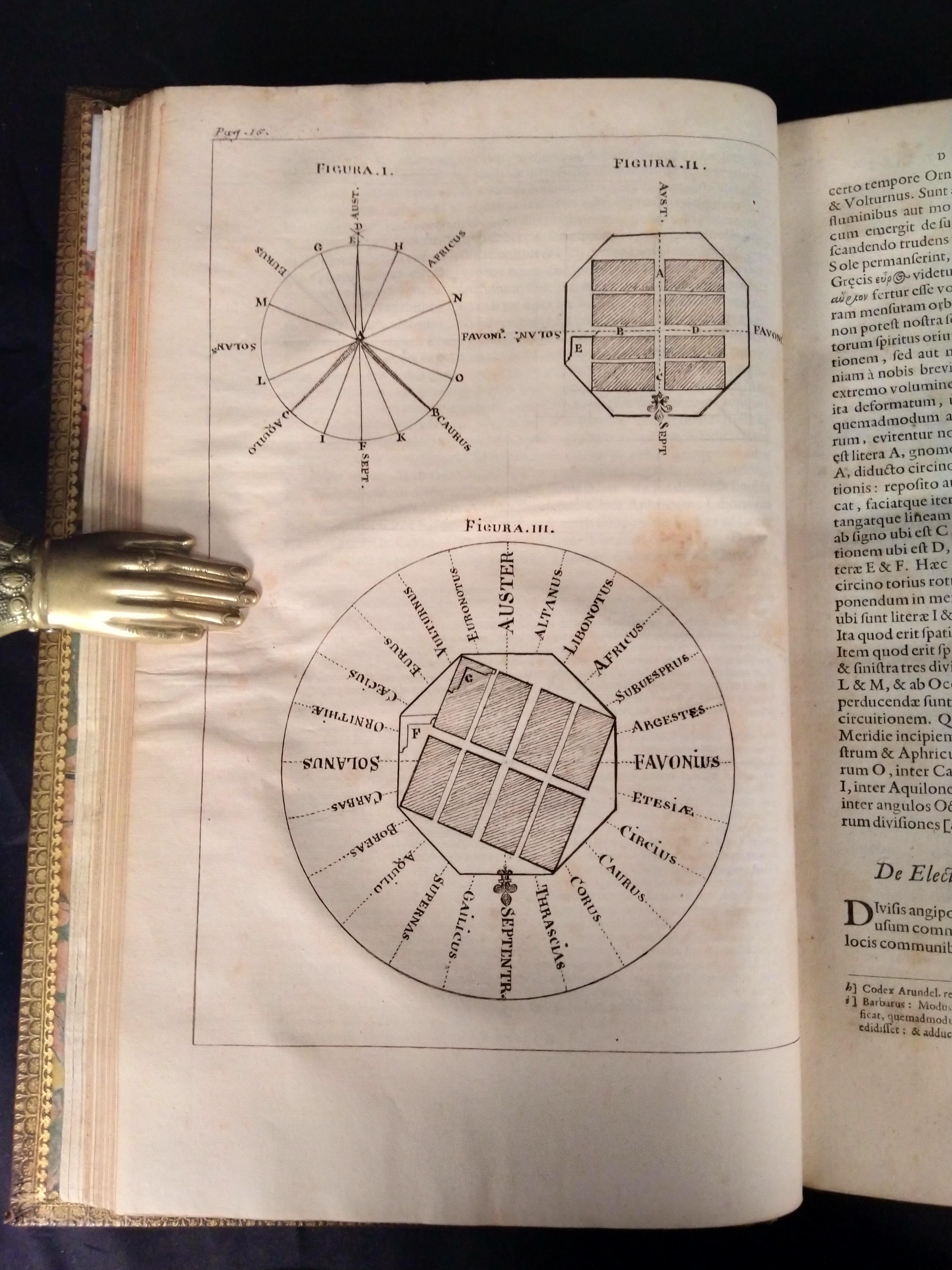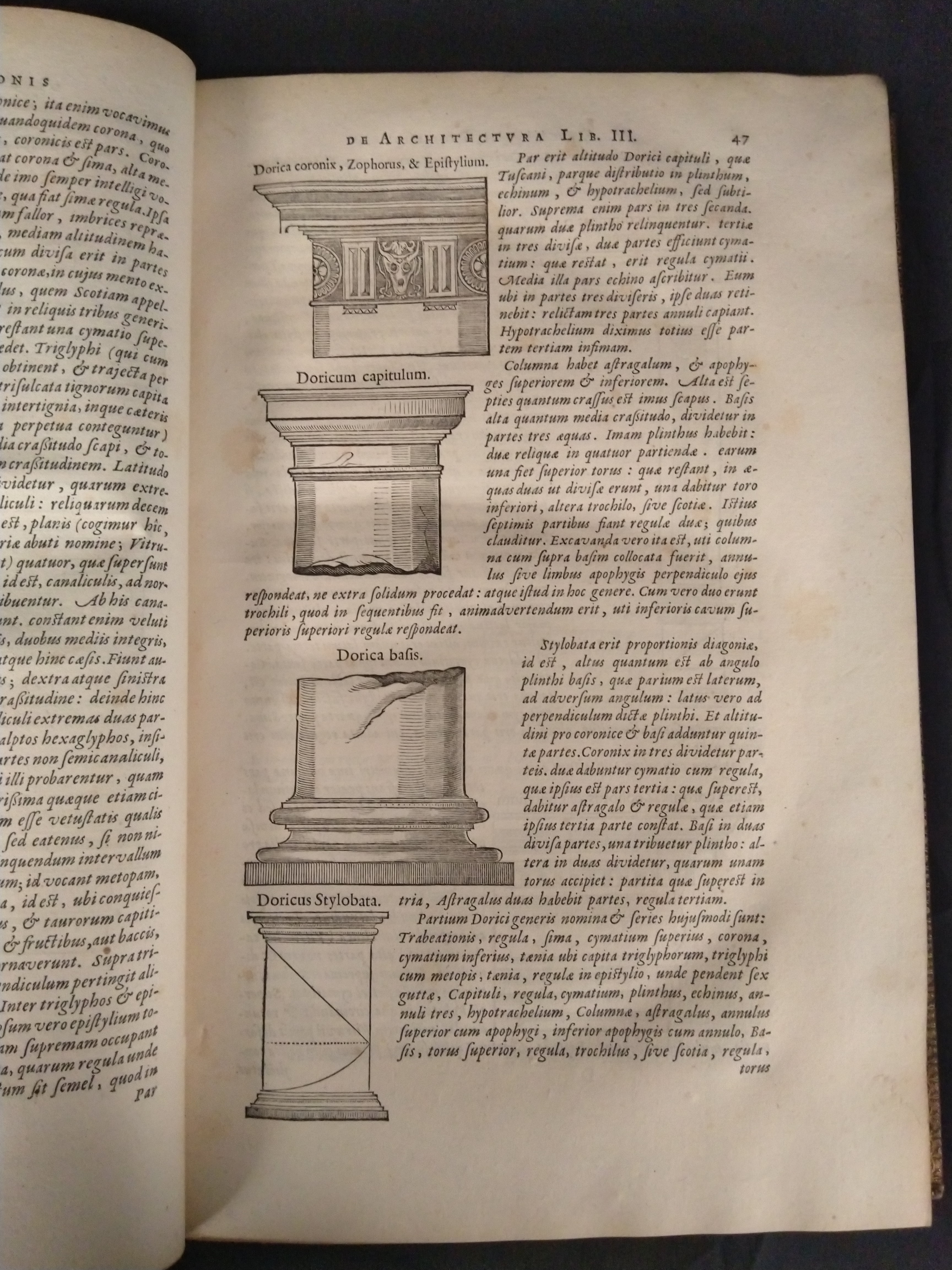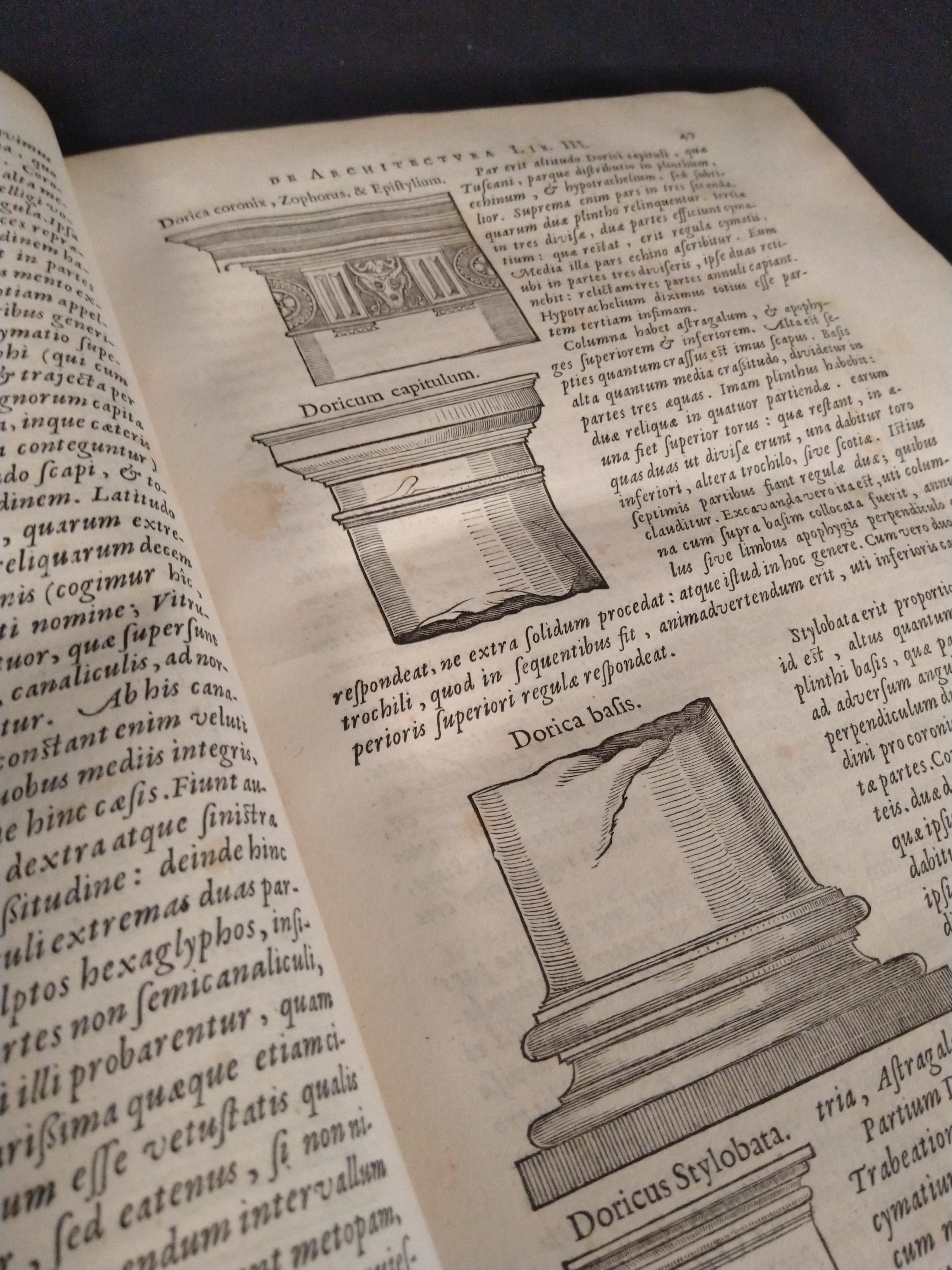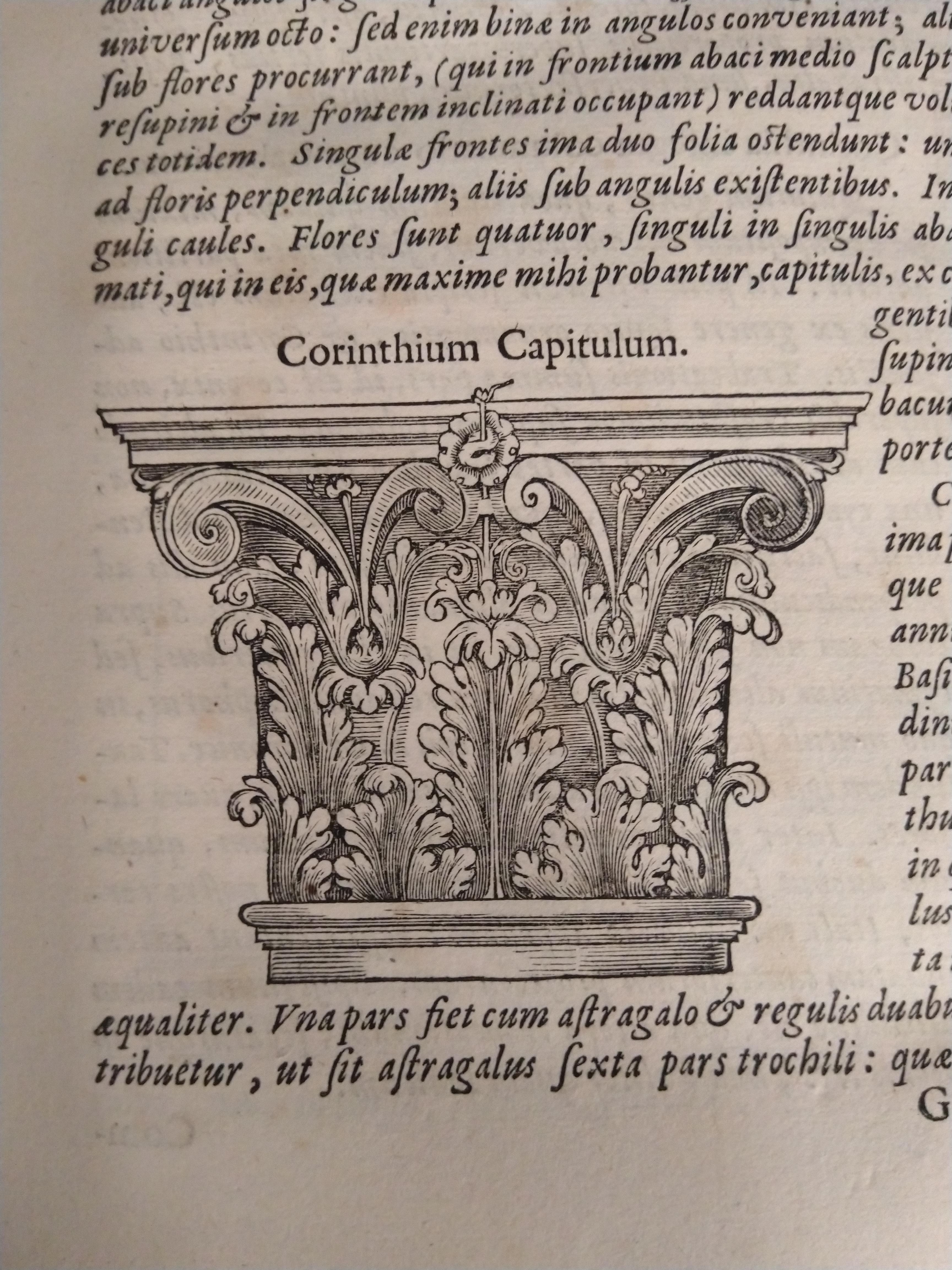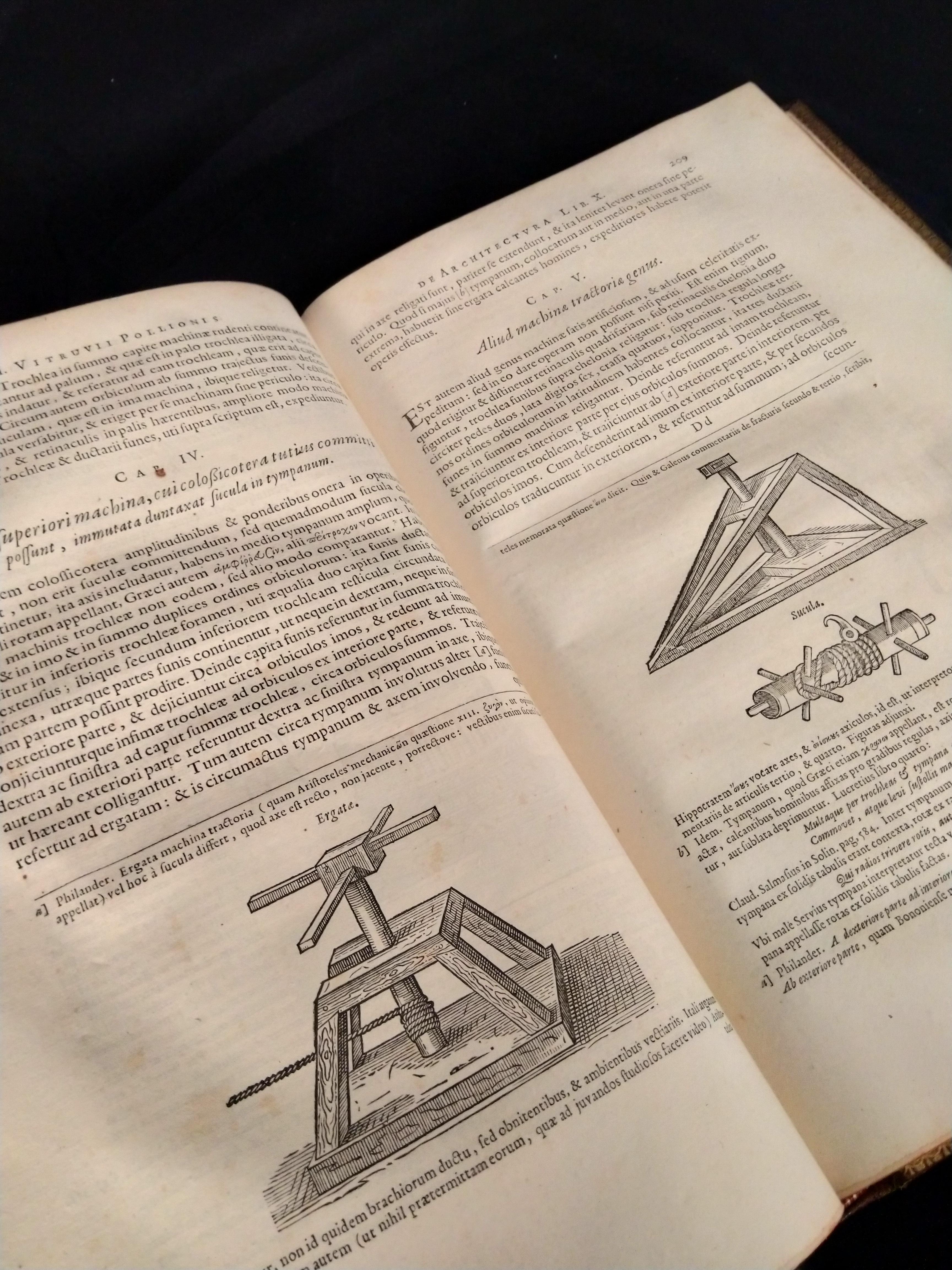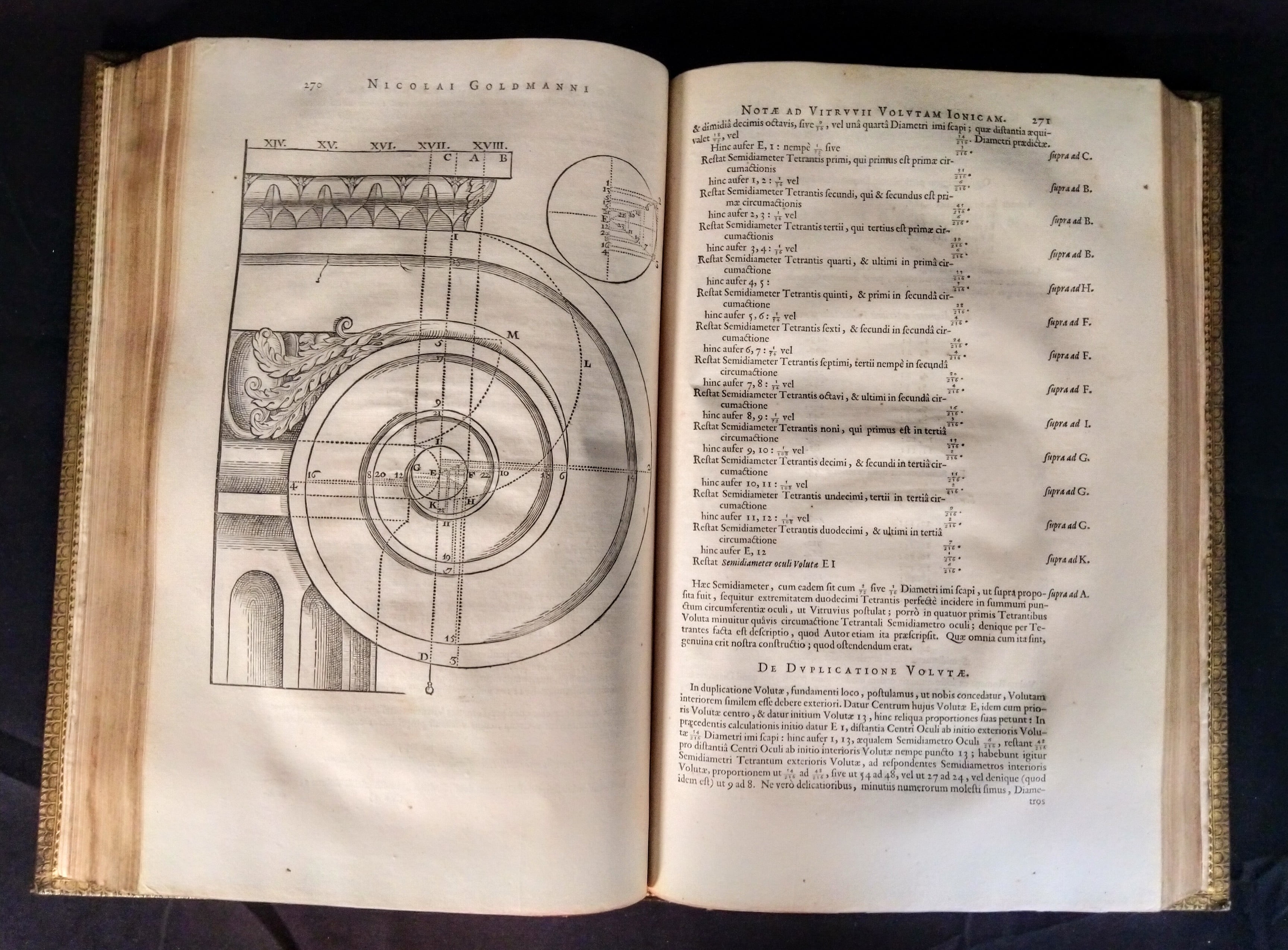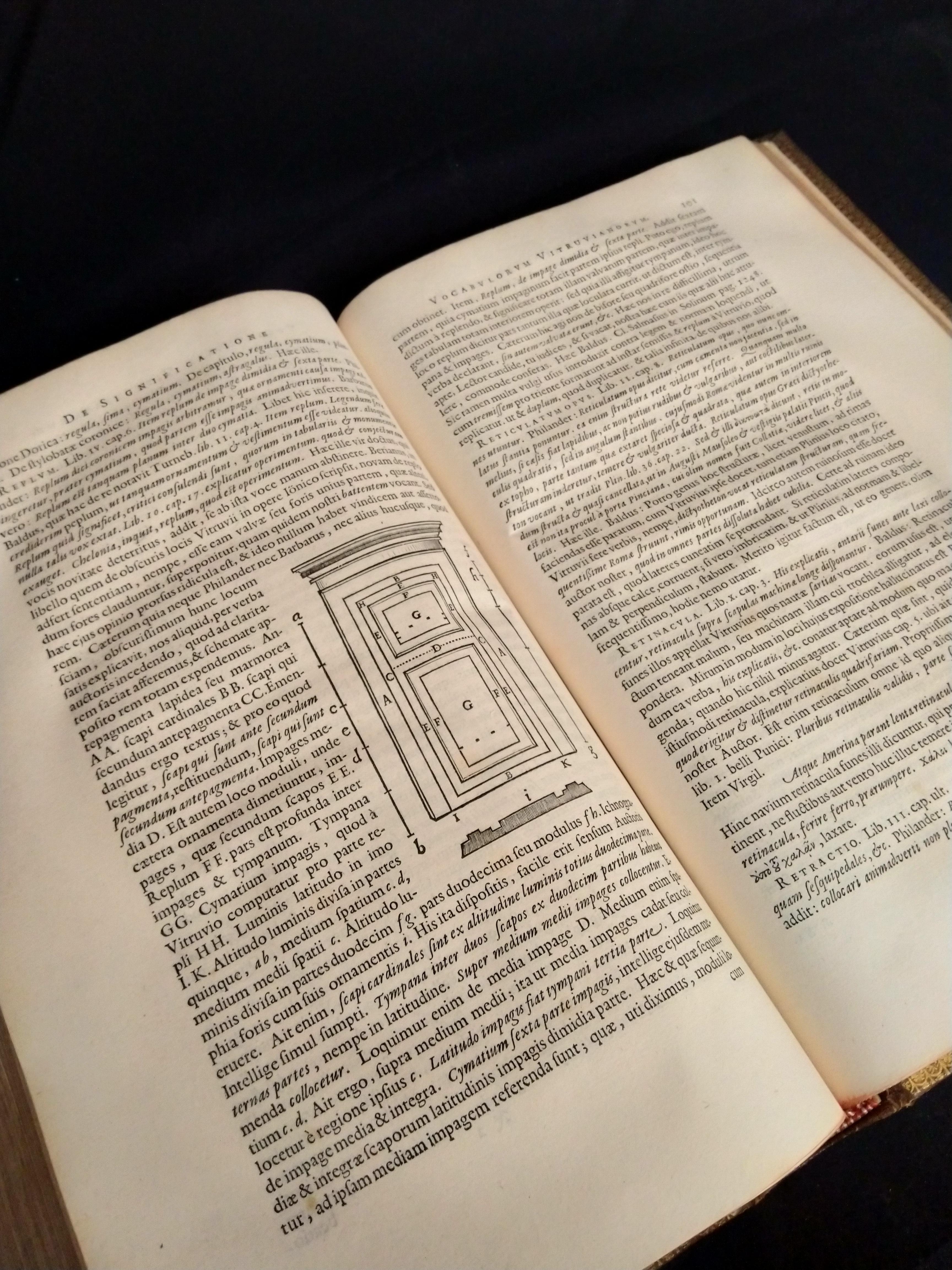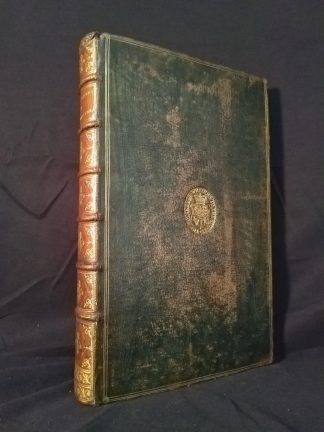VITRUVIUS POLLIO, Marcus.
ILLUSTRATED ARCHITECTURAL COMPENDIUM
De architectura libri decem…Elemeta architecturae…ab Henrico Wottono…Lexicon Vitruvianum…et…Scamilli Impares.
Amsterdam, L. Elzevirum, 1649£2,250.00
Folio. pp. (viii) 272 (xxviii), 164, 69 (iii). Roman letter, with Italic, little Greek. Engraved t-p with ancient architects discussing drawing surrounded by columns, classical building in background, 4 full-page and over 70 small woodcuts, mainly of columns, decorated initials and ornaments. Slight toning or marginal spotting, light foxing in places, small ink mark to lower margin of Z5, verso of last a little soiled. A very good, clean, fresh copy, on thick paper, in C18 crushed morocco over boards stained green, marbled endpapers, triple gilt ruled, small fleurons to corners, armorial gilt centrepiece of the Society of Writers to the Signet, raised bands, tan spine in seven compartments, gilt large fleuron and cornerpieces to each, inner edges gilt, a.e.g., minor loss at head of spine. C20 bookplate to front pastedown, C18 casemark inked to ffep, C18 inscription ‘J Gale’ to t-p.
Handsome, clean, crisp copy of this important edition of the founding work of Renaissance architectural theory, issued with translations by Johannes de Laet—polymath and director of the Dutch West India Company—of other major, nearly contemporary, contributions. It is ‘a superb edition, decorated with many woodcuts’, ‘somewhat scarce’ (Willems 1097)—a very useful compendium for practitioners. The first work is a Latin translation of ‘Elements of Architecture’ (1624), itself a free adaptation of Vitruvius’s major opus, by the English scholar and diplomat Henry Wotton (1568-1639). Following Vitruvius, he identifies the ‘ultimate end of architecture as building well’ and that good buildings should be ‘comfortable, solid and aesthetically delightful’. The second is the only surviving major ancient work on the subject—‘De architectura’ in ten books by Vitruvius (80/70-15BC), a Roman architect and engineer. He begins from the basics (what is architecture, the building of foundations, the qualities of woods and stones), and proceeds with the handsomely illustrated examination of building structures (the decoration and proportions of the five orders of columns) and the construction of specific buildings (e.g., temples, theatres or baths, private or communal residences), down to their painting and the effects of humidity. Most famously, in book III, Vitruvius related the proportions of temples to those of the human figure—a theory which inspired Leonardo’s immensely influential drawing of the ‘Vitruvian Man’ inscribed within a circle. There follow works on integrating architectural theories including Agricola’s on weights and measurements, Goldmann’s essay on the ‘voluta ionica’, Alberti’s works on painting and sculpture, and two commentaries, a technical dictionary, an index and a treatise on the pedestal of columns (‘Scamilli impares’) all relating to Vitruvius’s work. A handsomely printed, important compendium of major architectural theories, from antiquity to the mid-C17.
Berlin Katalog 1817; Fowler 417; Cicognara 726; Willems 1097.In stock



